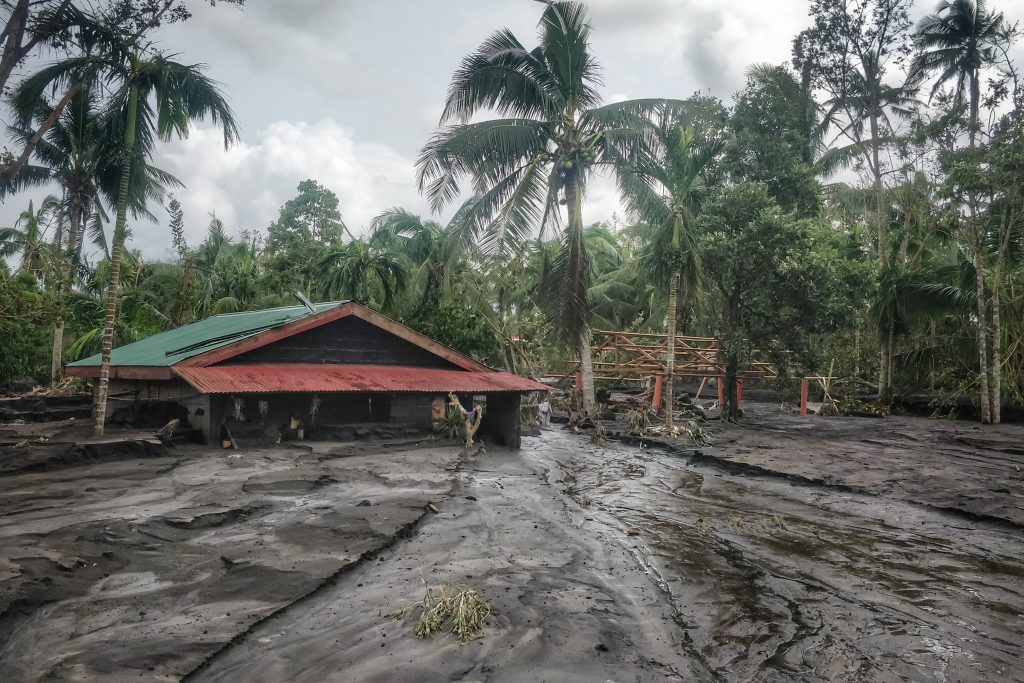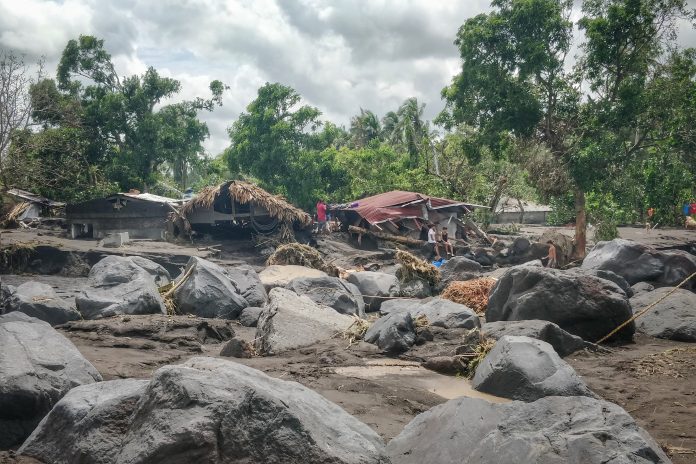An environmental activist group this week called for an independent investigation into quarrying operations that allegedly caused the massive flow of lahar, inundating villages at the height of super typhoon “Rolly” (international name: Goni) in the province of Albay.
At least 300 houses were reported buried under a mix of sand, mud, lahar, and even huge rocks from the slopes of Mayon Volcano in the town of Guinobatan.
The Department of Environment and Natural Resources has assured the public that it will investigate the quarries even as it announced the suspension of quarrying activities in the province following the directives of President Rodrigo Duterte.
The Kalikasan People’s Network for the Environment, however, called for an “independent investigation” after government spokesman Harry Roque downplayed the impact of the quarries on the community.
Roque said the quarries were allowed to remove the lahar that accumulated on the slopes of the volcano through the years. He said officials in the province have even requested for funds to deal with the lahar deposits.
Earlier, Governor Francis Bichara of Albay claimed that the lahar that rampaged through the village was not from the quarries but was carried by flood waters from the mountain.
Leon Dulce of Kalikasan said the lahar flow “tells a tale of probable mismanagement or even illegal quarrying activities,” adding that “no stone should be left unturned in checking if there was negligence or illegal activities.”
He said it is time for the government to look at possible accountability in the “non-implementation” of laws, or “failure of the government to mitigate the impact that displaced hundreds of families by the lahar flow.”
Kalikasan insisted that despite persistent warnings from the Philippine Institute of Volcanology and Seismology, the government failed to implement strong measures to cushion the impact of natural disasters.
Bishop Joel Baylon of Legazpi earlier called on the government to investigate quarrying activities around the scenic Mayon Volcano.
“We see many factors that should be given attention especially the ongoing quarrying on the slopes of Mayon Volcano that might be partly responsible for the unnecessary big amount of lahar flowing down,” said Bishop Baylon.
“We are trying to call the attention of the government to address this matter,” said the bishop in an interview with LiCAS.news.

The prelate said that while “there is not much we can do with nature’s wrath,” recent studies on the frequency and increasing intensity of typhoons seem to point to human activity as partly responsible. “[In that aspect], I believe there is more to be done,” he said.
“While I may not have the power nor resources to lessen a typhoon’s intensity, I have the capacity to do small things that can mitigate unnecessary destruction when disasters come,” said the bishop as he urged people to be more responsible, especially in cutting trees.
“There are reminders from government agencies, but still irresponsible cutting is happening. We don’t have much logs here anymore, we don’t have forested areas,” he said.
“We can not stop mother nature, but we can lessen the destruction and deaths if we are going to be more responsible with the way we deal with things,” said the bishop.
In 2006, super typhoon Reming (international name: Durian) also caused massive destruction in the Bicol region, leaving 1,366 people dead after mud flowed from Mayon Volcano.
Super typhoon “Rolly” left the country early morning of November 2 with at least 20 deaths and about 390,000 people displaced from their homes.









